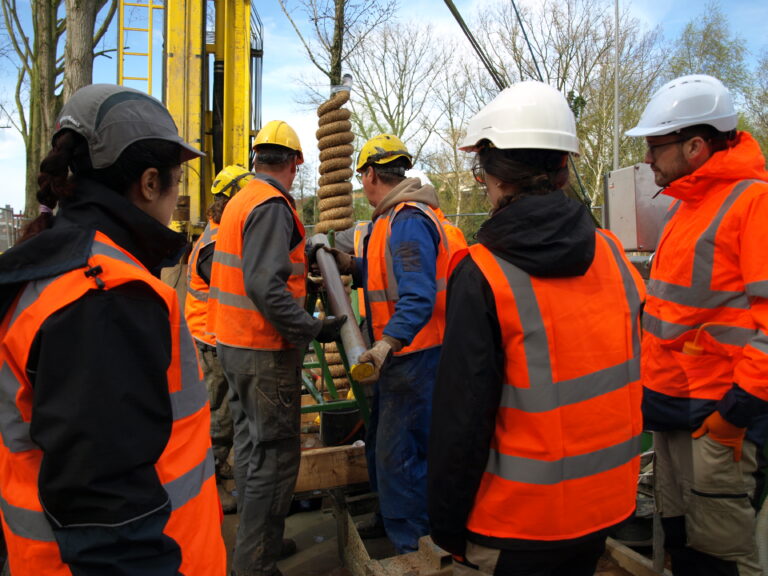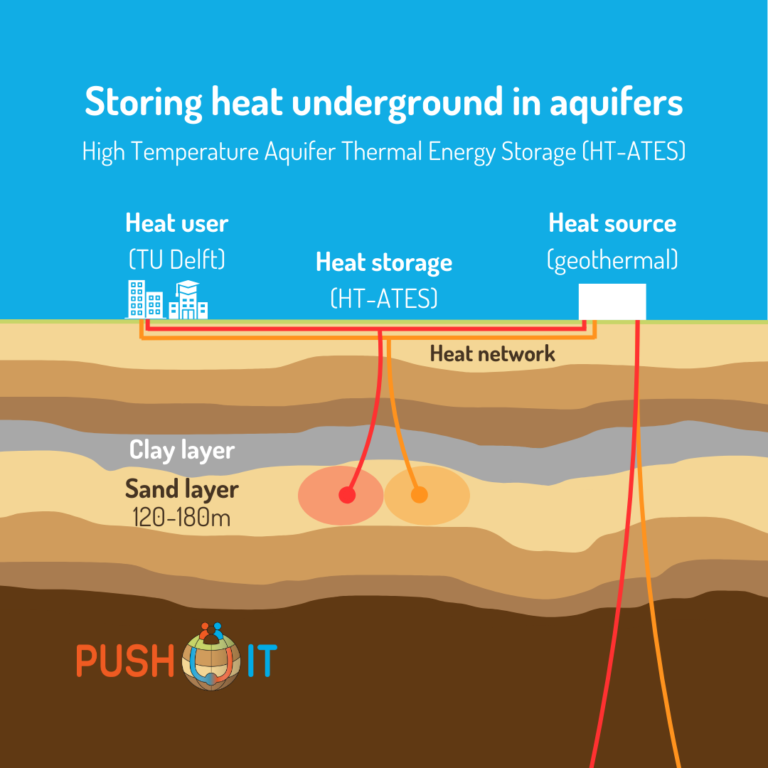The first results are in from pilot and monitoring borehole drilling in Delft!
Aquifer Thermal Energy Storage (ATES) is a technology whereby surplus heat is stored underground in summer and pumped up again in colder periods when the heat is required. A pilot and monitoring borehole was drilled by Haitjema to a depth of 220 meters to map the detailed characteristics of the subsurface for heat storage in the local aquifer.

Testing and monitoring water quality.
Apart from standard logging and measurements such as analysis of water quality and a pumping test, microbiological analyses were performed by French Geological Survey (BRGM). These measurements function as a reference to evaluate possible future impact of the hot stored water on the groundwater ecosystem and safeguard the environment.
Sand layers promising for storing heat.
Initial evaluation of drilling logs shows that sand layers in the depth range from 120 to 180 meters are well suitable for storage. This is due to their hydraulic conductivity – the layer allows pumping of groundwater – and the presence of a clay layer on top that helps to limit heat loss to confining layers. This layer acts like blanket that keeps the heat from escaping upwards.
(text continues after image)

Wells drilled at alternate location to limit impact.
For the main wells, a different location than originally planned is chosen. This is because there is a shallow low temperature ATES nearby. Computer modelling showed that the high temperature ATES would have a stronger than expected impact on the low-temperature system. So, the HT-ATES is moved to a location where no strong influence on other shallow heat storage systems is expected.
Predicting impacts is crucial to limit disturbances.
This shows the importance of modelling heat storage systems and their impacts on the surroundings. The PUSH-IT project is actively developing and improving the modelling and monitoring of these impacts.
About the project
The PUSH-IT project focuses on extending conventional storage temperature ranges of 5 to 20 °C by showcasing high-temperature heat storage technologies at temperatures of 60 – 90 °C (HT-ATES). An advantage of storing at higher temperatures is that heat can be used directly without a heat pump. At the demonstration location on the TU Delft campus, together with Shell and EBN, a high-temperature ATES will be developed. This system will store heat from a neighbouring deep geothermal well so that it can be used in winter.
Read more about the Delft demonstration site here.

PUSH-IT is a project funded by the European Union’s Horizon Europe research and innovation programme under grant agreement No 101096566.
Funded by the European Union. Views and opinions expressed are however those of the author(s) only and do not necessarily reflect those of the European Union. Neither the European Union nor the granting authority can be held responsible for them.
